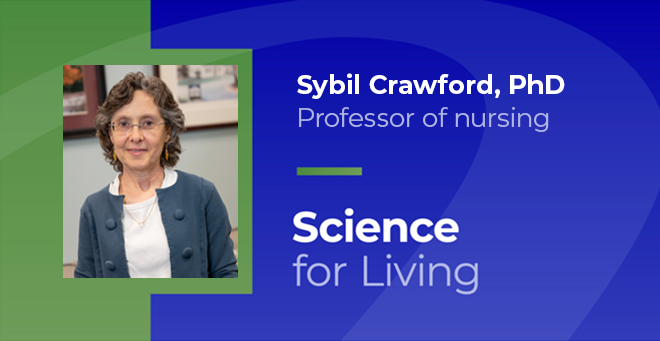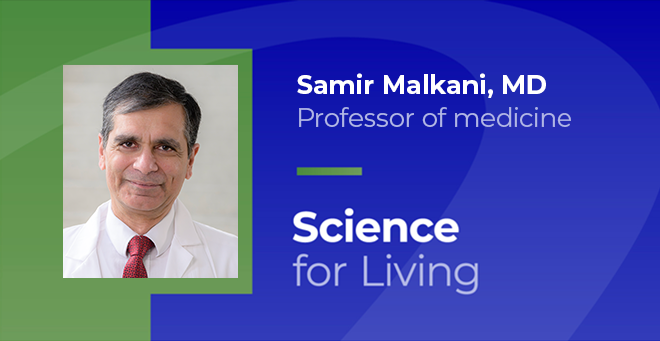
Heart disease is the number one cause of death worldwide for both men and women. So, what can patients and their physicians do to prevent it?
Last year, the AHA released a new cardiovascular risk calculator called PREVENT, which updates the American College of Cardiology’s Atherosclerotic Cardiovascular Disease (ASCVD) calculator.
UMass Chan Medical School cardiologists explain what the new risk calculator means and what exciting new research is taking place to help patients better control their risk.
Current guidelines for physicians use the ASCVD calculator, released in 2013, to predict the 10-year risk of a cardiovascular event such as heart attack or stroke for patients aged 40 to 79, according to Brigid M. Carlson, MD’06, assistant professor of medicine. The ASCVD calculator considers age, sex, lipid levels (cholesterol), smoking, diabetes, hypertension and race.
“The big thing that it’s used for is to calculate who should be on lipid-lowering medication, which while there are new ones out there, for most patients is going to be a statin,” Dr. Carlson said.
Patients who have a 20 percent or higher chance of a cardiovascular event in the next 10 years are prime candidates for a statin. Patients with less than a 5 percent risk are considered at low risk. Recommendations for those in the middle would depend on other factors such as family history and could include more exploration of lifestyle modifications such as diet, exercise and smoking.
What’s different about the new PREVENT calculator
The 2013 ASCVD calculator is based on patients who were in research studies in the United States from the 1960s to the 1990s, Carlson explained.
The PREVENT calculator was developed using data from more than 6 million adults in the U.S. from a variety of racial and ethnic, socioeconomic and geographic backgrounds. It includes data from electronic health records as well as research studies, factoring in people seeking care in a variety of settings.
Key differences in the PREVENT calculator, compared with the existing ASCVD calculator, include:
- PREVENT is for adults as young as age 30 and estimates 10-year and 30-year risk of total cardiovascular disease.
- The PREVENT calculator includes measures of kidney function.
- The PREVENT risk calculator includes a measure of metabolic health, hemoglobin A1C.
- Heart failure risk prediction is included; and
- Risk calculations are race-free, using ZIP code instead as a proxy for social determinants of health.
“The design is really appealing, as it’s taking into account a lot more factors that we know are associated with cardiovascular disease,” said Carlson.
Carlson particularly likes being able to use the PREVENT calculator with younger patients, those in their 30s, when their 10-year risk might be low, but their 30-year risk might be elevated.
What are future developments?
Khanh-Van T. Tran, MD, PhD’14, assistant professor of medicine, is a preventive cardiologist who conducts research on atherogenic lipoparticles—the low-density lipoproteins, or “bad” cholesterol, which play a major role in the development of atherosclerosis. She leads the lipids clinic at UMass Memorial Health.
Dr. Tran said decreasing a patient’s LDL by around 40 milligrams per deciliter decreases their risk of having a heart attack or stroke by one-fifth.
“What’s interesting to me is that even knowing what we know about how improving cholesterol will help our patients, when we look at UMass Memorial and the national data, only 50 percent of patients are below the threshold where we’d like them to be,” said Tran.
Tran is studying factors associated with patients’ adherence to taking prescribed medications. While statins are considered tried and true, according to Tran up to 50 percent of patients stop taking them. She and her students are seeking to understand why and to see if those obstacles can be overcome.
She also is the site principal investigator for a UMass Chan Phase III clinical trial called VICTORION-1 PREVENT, sponsored by pharmaceutical firm Novartis. The study aims to evaluate the effectiveness of a new RNA interference drug known as inclisiran on preventing primary cardiac events in patients at high risk.
“With the tools we have now, with RNA interference, some of the new gene editing technology, I think it’s an exciting time for lipid-lowering therapies that we can offer to patients to lower heart attack and stroke risk,” Tran said.
Science for Living features the perspectives of UMass Chan Medical School experts on the research behind health news headlines. If you have ideas for topics you’d like to see explored, please send them to susan.spencer1@umassmed.edu.

